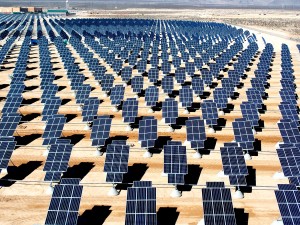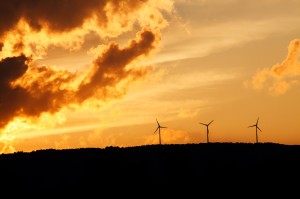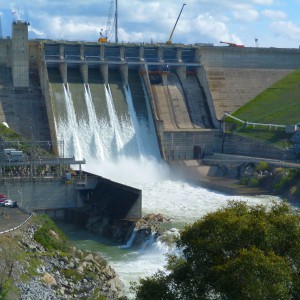Energy generation in China must become more flexible and sustainable in the long term for the sake of the environment. Kevin Popper from Azure International discusses the alternatives below and says that China must break its reliance on coal-generated power.
 The transformation of China’s coal-based energy generation infrastructure to meet the demands of urbanisation and sustainability will incur large economic and institutional costs. However, reform is essential in order to resolve urgent public health and ecological concerns.
The transformation of China’s coal-based energy generation infrastructure to meet the demands of urbanisation and sustainability will incur large economic and institutional costs. However, reform is essential in order to resolve urgent public health and ecological concerns.
Though China is the world’s largest consumer of energy, and accounts for roughly half the coal burned worldwide, on a per-capita basis China only possesses half the world average coal and hydropower resources. China’s water resources are even scarcer at only a quarter of the world average, while oil and gas resources are just a fifth of the world average. Conserving these resources is essential.
In the long term, shifting more of China’s population to urban centres has a number of environmental benefits  including lower electricity consumption per capita. In developed countries, urban electricity consumption per capita is typically well below rural averages. City residents live in smaller spaces and need less lighting, heating and cooling. This contributes to long-term energy and resource efficiency.
including lower electricity consumption per capita. In developed countries, urban electricity consumption per capita is typically well below rural averages. City residents live in smaller spaces and need less lighting, heating and cooling. This contributes to long-term energy and resource efficiency.
In the short term, however, urbanisation will lead to an increase in demand for commercial and residential electricity. This is due to the gap in income and quality of life between urban and rural residents. According to the China Academy of Social Sciences (CASS), in 2011 the average per capita income of urban residents was 143 per cent higher than rural migrant workers. So it is not urbanisation per se that is driving urban electricity consumption, but rather it is due to increases in income and improvements to quality of life.
There should be sufficient generation capacity to meet this new demand; lower than expected industrial power demand during the first six months of 2013 has made room for commercial and residential load growth. Nonetheless, meeting urban electricity demand growth will challenge China’s current generation assets.
In China coal is king, making up over two thirds of the total installed power capacity in 2012. Large coal-fired power plants are well suited to providing cheap, reliable power to match industrial demand. Industrial power demand is relatively flat throughout the day, allowing coal plants to operate at near constant outputs. However, these power plants are not suitable for providing commercial and residential loads, with their daytime peaks and night-time lows.
 Moreover, urbanisation is driving industrial plants further from the city, leading to a high concentration of peaky commercial and residential loads in city centres. A review of recent ancillary service settlements in Tianjin and Beijing reveals that urban power consumption has already led to coal plants being cycled on and off on a daily basis. This significantly lowers plant lifetimes and efficiencies. In addition, large coal plants are due an excess of CNY 500 thousand each time this occurs.
Moreover, urbanisation is driving industrial plants further from the city, leading to a high concentration of peaky commercial and residential loads in city centres. A review of recent ancillary service settlements in Tianjin and Beijing reveals that urban power consumption has already led to coal plants being cycled on and off on a daily basis. This significantly lowers plant lifetimes and efficiencies. In addition, large coal plants are due an excess of CNY 500 thousand each time this occurs.
Unlike coal, natural gas-fired power plants can handle large swings in electricity demand and be cycled on a daily basis without significant cost. A switch towards cleaner and more flexible natural gas generation is already underway in Beijing, Shanghai and Chongqing. Since 1998, Beijing has built no new coal-fired power plants; by the end of 2015, the city hopes to replace all coal-fired boilers within the fourth ring road.
Large combined-cycle, gas-fired power plants with combined heat and power (CHP) capability are taking their place. Also known as cogeneration, CHP is the simultaneous production of electricity and heat from a single fuel source. Shanghai and Chongqing have similar plans.
Adoption of natural gas-fired generation in other cities has failed to gain momentum however. Cost, availability and power company opposition are all significant barriers.
The cost of natural gas generation is 20-30 per cent higher than coal-fired generation and the additional cost burden is currently shouldered by the local government. Beijing’s Deputy Mayor, Huang Wei, estimates that if natural gas prices reach CNY 3 per cubic meter, the city would need to find an additional CNY 27 billion (USD 4.4 billion).
Several recent investments in liquefied natural gas (LNG) import infrastructure signal that significant price increases are likely over the next five years. In addition, China National Offshore Oil Corporation (CNOOC) has indicated that commercial shale gas operation will take longer than originally speculated, so cheap, abundant gas is not on the near horizon.
 Besides cost challenges, it is important to point out that few cities have sufficient infrastructure to handle a shift to natural gas generation. National oil and gas companies will hesitate to invest in more infrastructures unless price reforms allow them to realise positive returns on investment. Generation plants will also compete to gain priority over residential and transportation natural gas consumption, given limited supply.
Besides cost challenges, it is important to point out that few cities have sufficient infrastructure to handle a shift to natural gas generation. National oil and gas companies will hesitate to invest in more infrastructures unless price reforms allow them to realise positive returns on investment. Generation plants will also compete to gain priority over residential and transportation natural gas consumption, given limited supply.
In addition political pressures from power companies worried about high costs have also stymied natural gas-fired generation development plans. Power companies are worried that shutting down recently built coal-fired power plants will cause significant losses.
New energy resources, like wind and solar, are also contributing to the need for flexibility in urban power generation.
Currently, China State Grid plans to build huge transmission lines to transport large amounts of wind and solar power from China’s Northern and Western regions into Eastern load centres. As such, generation located within these urban centres will need to not only meet growing peak and off-peak electricity demand but also counteract the variability of wind and solar power. Natural gas-fired generation, energy storage and demand side management will all have a role to play in providing this necessary balancing capability. There is also a strong recent push to build more distributed photovoltaic (PV) systems, which will increase the variability of power supply in areas with high penetrations.
Generation changes should help China’s citizens breathe easier. Whether electricity comes from clean solar and wind resources or relatively cleaner natural gas generation, it should help greatly reduce the amounts of harmful particulates in the air. According to Environmental Protection Agency (EPA) estimates, natural gas-fired generation produces less than half the carbon dioxide, less than a third of the nitrogen oxides and around one per cent of the sulphur oxide emissions when compared with coal-fired generation. Wind and solar emissions are virtually non-existent.
The extent to which Chinese industrialisation and urbanisation can coexist will be tested during this generation transformation. Higher generation prices will eventually require higher retail electricity tariffs, forcing energy-intensive industries to reconsider their locations. One solution often discussed is tariff reform aimed at eliminating cross-subsidisation between load types. Hence, the cost and the burden of meeting urban electricity demand would shift from industrial power consumers towards residential customers who have historically underpaid for electricity.
China’s continuing urbanisation will involve considerable cost and encounter significant growing pains. However, when water, coal and oil scarcity becomes a topic of daily conversation, China and its citizens will be glad they live in resource-efficient urban centres. For European companies, China’s unprecedented urbanisation trend represents an opportunity to apply the lessons of post-industrial economies to facilitate a cleaner and more rational transition.
Azure International is a leading investment and advisory company focused on China’s cleantech energy sector. Founded in 2003, Azure has a team of local and international professionals based in China with backgrounds in engineering, marketing, manufacturing, consulting, policy, government relations and finance. In addition to deep advisory capabilities, Azure has proven capability to invest in and accelerate the development of clean energy companies. Our portfolio and partner companies have achieved both significant commercial success and returns to investors. Azure provides the necessary expertise and execution capabilities in China to lead relationship development with government and strategic partners, project execution, sourcing, sales and technology development — all with deep understanding of Chinese and international requirements.


Recent Comments